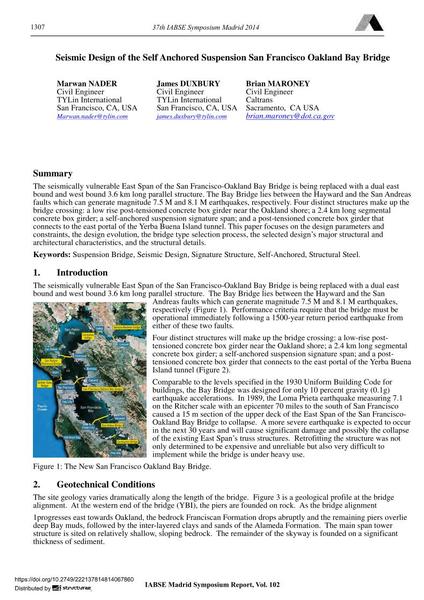Seismic Design of the Self Anchored Suspension San Francisco Oakland Bay Bridge

|
|
|||||||||||
Bibliographic Details
| Author(s): |
Marwan Nader
James Duxbury Brian Maroney |
||||
|---|---|---|---|---|---|
| Medium: | conference paper | ||||
| Language(s): | English | ||||
| Conference: | IABSE Symposium: Engineering for Progress, Nature and People, Madrid, Spain, 3-5 September 2014 | ||||
| Published in: | IABSE Symposium Madrid 2014 | ||||
|
|||||
| Page(s): | 1307-1314 | ||||
| Total no. of pages: | 8 | ||||
| Year: | 2014 | ||||
| DOI: | 10.2749/222137814814067860 | ||||
| Abstract: |
The seismically vulnerable East Span of the San Francisco-Oakland Bay Bridge is being replaced with a dual east bound and west bound 3.6 km long parallel structure. The Bay Bridge lies between the Hayward and the San Andreas faults which can generate magnitude 7.5 M and 8.1 M earthquakes, respectively. Four distinct structures make up the bridge crossing: a low rise post-tensioned concrete box girder near the Oakland shore; a 2.4 km long segmental concrete box girder; a self-anchored suspension signature span; and a post-tensioned concrete box girder that connects to the east portal of the Yerba Buena Island tunnel. This paper focuses on the design parameters and constraints, the design evolution, the bridge type selection process, the selected design’s major structural and architectural characteristics, and the structural details. |
||||
| Keywords: |
seismic design suspension bridge structural steel self-anchored signature structure
|
||||

